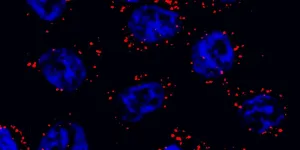(Press-News.org) June 9, 2021 - The first analysis of medical evidence on domestic mass shooters in the U.S. finds that a large majority of perpetrators have psychiatric disorders for which they have received no medication or other treatment, reports a study in the Journal of Clinical Psychopharmacology. The journal is published in the Lippincott portfolio by Wolters Kluwer.
"Without losing sight of the larger perspective that most who are violent are not mentally ill, and most of the mentally ill are not violent, our message is that mental health providers, lawyers, and the public should be made aware that some unmedicated patients do pose an increased risk of violence," according to the report by Ira D. Glick, MD, of Stanford University School of Medicine and colleagues.
In-depth analysis of psychiatric evidence on domestic mass shooters
The researchers identified 115 persons identified as committing a mass shooting in the United States from 1982 to 2019, based on the most comprehensive listing available (the Mother Jones database). The database excluded shootings related to "conventionally motivated" crimes such as armed robbery or gang violence.
"In the vast majority of the incidents identified in the database, the perpetrator died either during or shortly after the crime," the researchers note. They focused on the 35 cases where the assailant survived and underwent criminal proceedings - providing the best information on their symptoms of mental illness and psychiatric state.
For each mass shooting event, the researchers spent hours analyzing records or interviewing the forensic psychiatrists or psychologists who examined the assailant after the crime. Other sources of information included court proceedings, public records, videotaped interviews, and social media posts or writings by the perpetrator. Dr. Glick's coauthors were Nina E. Cerfolio, MD, of the Icahn School of Medical at Mount Sinai Hospital, New York; Danielle Kamis, MD, of Stanford; and Michael Laurence, JD, a prominent capital defense attorney.
"Based on this data, 32 of the 35 perpetrators had signs and symptoms of brain illness, which fit scientific diagnostic criteria for a clinical psychiatric disorder," Dr. Glick comments. Eighteen of the shooters had schizophrenia while 10 had other diagnoses including bipolar disorder, delusional disorder, personality disorders, and substance-related disorders. In three cases, there was not enough information to make a diagnosis; in four cases, no psychiatric diagnosis was found.
Of the 28 surviving assailants with a psychiatric diagnosis, "None were medicated or received other treatment prior to the crime," the researchers write. They also analyzed 20 mass shooters who died at the crime scene, using available data from the media or significant others. Eight assailants had schizophrenia, seven had other diagnoses, five had unknown diagnoses. Similarly, none were receiving appropriate medications.
Despite the tragically high frequency of mass shooting events, there has been almost no medical research on the nature and incidence of brain illness among the perpetrators of these crimes. The study originated in Dr. Glick's clinical impression that many, if not most, mass shooters are people with unidentified psychiatric illness - complicated by a lack of support from family or significant others in getting the help they needed.
The authors acknowledge some important limitations of their study: it included only limited evidence on a small group of domestic shooters who survived, with no comparison group. "Nonetheless," the researchers write, "our data suggest that persons who commit mass murders may suffer from compromising and untreated psychiatric illness."
"The psychiatric disorders seen in perpetrators of mass shootings are serious brain illnesses - as much in need of proper diagnosis and treatment as heart disease or any other medical condition," Dr. Glick adds. "We need to reduce the stigma associated with these diseases to enable patients to receive appropriate and adequate psychiatric medication and other treatments. By actually talking to patients and their significant others, we have the opportunity to save lives."
INFORMATION:
Click here to read "Domestic Mass Shooters: The Association With Unmedicated and Untreated Psychiatric Illness."
DOI: 10.1097/JCP.0000000000001417
About the Journal of Clinical Psychopharmacology
Journal of Clinical Psychopharmacology, a leading publication in psychopharmacology, offers a wide range of articles reporting on clinical trials and studies, side effects, drug interactions, overdose management, pharmacogenetics, pharmacokinetics, and psychiatric effects of non-psychiatric drugs. The journal keeps clinician-scientists and trainees up-to-date on the latest clinical developments in psychopharmacologic agents, presenting the extensive coverage needed to keep up with every development in this fast-growing field.
About Wolters Kluwer
Wolters Kluwer (WKL) is a global leader in professional information, software solutions, and services for the clinicians, nurses, accountants, lawyers, and tax, finance, audit, risk, compliance, and regulatory sectors. We help our customers make critical decisions every day by providing expert solutions that combine deep domain knowledge with advanced technology and services.
Wolters Kluwer reported 2020 annual revenues of €4.6 billion. The group serves customers in over 180 countries, maintains operations in over 40 countries, and employs approximately 19,200 people worldwide. The company is headquartered in Alphen aan den Rijn, the Netherlands.
Wolters Kluwer provides trusted clinical technology and evidence-based solutions that engage clinicians, patients, researchers and students in effective decision-making and outcomes across healthcare. We support clinical effectiveness, learning and research, clinical surveillance and compliance, as well as data solutions. For more information about our solutions, visit https://www.wolterskluwer.com/en/health and follow us on LinkedIn and Twitter @WKHealth.
For more information, visit http://www.wolterskluwer.com, follow us on Twitter, Facebook, LinkedIn, and YouTube.
Smithsonian Conservation Biology Institute scientists are one step closer to understanding why some corals can weather climate change better than others, and the secret could be in a specific protein that produces a natural sunscreen. As their name implies, Hawaiian blue rice corals sport a deep blue pigment, which is created by chromoprotein and filters out harmful ultraviolet (UV) radiation from the sun. Although UV damage may produce long-term impacts to reproduction in many coral species--including brown rice coral--it may not have the same effect on blue rice coral. The findings of this study were published June 9 in ...
From 1980 to 2016, grain production in Brazil increased more than fourfold, and the country now stands as the world's largest soybean exporter and the second largest exporter of corn. The two main drivers of this increase in food production were cropland expansion and double-cropping, harvesting two crops, such as corn and soybeans, from the same field in a single year.
While cropland expansion has long been recognized as one of the drivers behind the increase in Brazil's agricultural output, a new study published in Nature Food quantifies for the first time the impact that double-cropping also ...
The fairy circles of the Namib are one of nature's greatest mysteries. Millions of these circular barren patches extend over vast areas along the margins of the desert in Namibia. In 1979, G.K. Theron published the first research about their origin. His hypothesis was that poisonous substances from Euphorbia damarana leaves induced fairy circles. As part of a new study, scientists from the University of Göttingen and the Gobabeb Namib Research Institute located the original euphorbia plants that were part of Theron's study. Four decades later, the researchers are now able to conclusively disprove Theron's original hypothesis. Their results were published in the journal BMC Ecology and Evolution.
In the late 1970s, South African botanist Theron noticed ...
A University of Oklahoma doctoral student, graduate and undergraduate research assistants, and an associate professor in the Homer L. Dodge Department of Physics and Astronomy in the University of Oklahoma College of Arts and Sciences are lead authors on a paper describing a "changing-look" blazar - a powerful active galactic nucleus powered by supermassive blackhole at the center of a galaxy. The paper is published in The Astrophysical Journal.
Hora D. Mishra, a Ph.D. student, and faculty member Xinyu Dai are lead authors of the paper, along with Christopher Kochanek and Kris Stanek at the Ohio State University and Ben Shappee at the University of Hawaii. The paper represents the findings of researchers from 12 different institutions who participated ...
Tsukuba, Japan - Holographic displays help add a three-dimensional--and thus more life-like--feel to what would otherwise appear as a two-dimensional image. Now, researchers in Japan have tested how this may work on a supramolecular level; such tests could lead to improved displays.
Commonly, one cannot overlay a certain type of molecular component that underlies helically arranged liquid crystals onto their molecular mirror images, much like a person cannot overlay their two hands and have them match up exactly without flipping one over. Molecules with this property are described as "chiral." Some materials make use of the principle of chirality to rotate light in a plane perpendicular to the direction of the light wave, known as circular ...
Researchers from the Singapore University of Technology and Design (SUTD) have developed novel techniques, known as Automated Fibre Embedding (AFE), to produce complex fibre and silicone composite structures for soft robotics applications. Their work was published in IEEE Robotics and Automation Letters.
Many soft robot components, including sensors and actuators, utilise embedded continuous fibres within elastomeric substrates to achieve various functionalities. However, manual embedding of continuous fibres in soft substrates is challenging due to the complexities involved in handling precise layering, and ...
Thermotherapy or heat treatment can help in treating lesions and other tissue injuries. For example, chemotherapy or radiotherapy, when combined with thermotherapy, kills tumorous cells more effectively. Thermotherapy is considered a promising approach for treating internal lesions, but the advancement in the field depends on the availability of patient-friendly heat-inducing devices capable of rapidly increasing the temperature of target tissues.
Current clinical practices around thermotherapy majorly employ heat-generating devices that are probed inside ...
DALLAS - June 9, 2021 - A phenomenon in which an RNA named NORAD drives a protein named Pumilio to form liquid droplets in cells, much like oil in water, appears to tightly regulate the activity of Pumilio. A new study led by UT Southwestern scientists suggests that such RNA-driven "phase separation," in turn, protects against genome instability, premature aging, and neurodegenerative diseases, and may represent a previously unrecognized way for RNAs to regulate cellular processes.
"It's becoming more and more clear that phase separation is an important organizing ...
A research team, led by Professor Kyoung-Duck Park in the Department of Physics at UNIST has succeeded in investigating and controlling the physical properties of naturally-formed nanoscale wrinkles in two-dimensional (2D) semiconductors. This is thanks to their previously-developed hyperspectral adaptive tip-enhanced photoluminescence (a-TEPL) spectroscopy. This will be a major step forward in developing paper-thin, ultra-flexible displays.
Wrinkles are an inevitable structural deformation in 2D semiconductor materials, which gives rise to spatial heterogeneity in material properties, according to the research team. Such structural deformation has long been considered one of the top technical challenges in semiconductor manufacturing, as this would harm the uniformity ...
Young clownfish living closest to shore are dying faster than those further offshore because they are being exposed to artificial lighting, says an international research team.
Working on the reefs around Moorea in French Polynesia, scientists from France, the United Kingdom, Chile and Australia found that nearshore juvenile clownfish living in anemones under lights had higher mortality than juveniles in anemones not exposed to artificial light.
The scientists also found that the surviving clownfish grew 44 per cent more slowly than clownfish under natural lighting conditions.
Professor Stephen Swearer, a marine ecologist, from the University of Melbourne, ...








